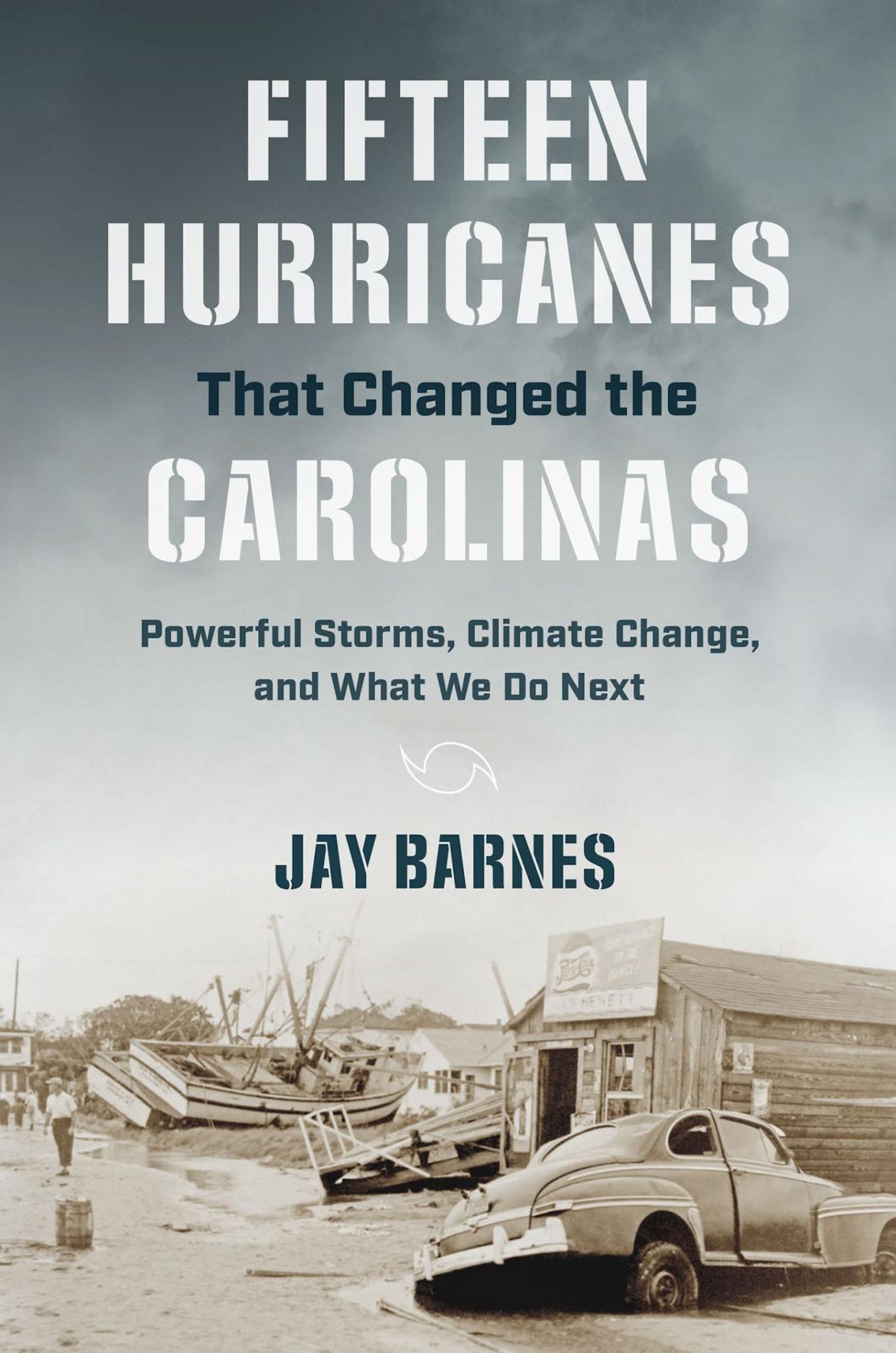Southport author wades into stormy history with '15 Hurricanes That Changed the Carolinas'

What James Beard was to cooking, what Dr. Spock was to babies and what Bruce Catton and Shelby Foote were to the Civil War, Jay Barnes is to hurricanes.
A Southport native and CEO of the N.C. Aquarium Society, Barnes has been chronicling tropical cyclones (a hurricane's proper name) for more than three decades. His "North Carolina's Hurricane History" first came out in 1995 and went through edition after edition as new storms blew ashore.
He also wrote a similar series for Florida, as well as "Hurricane Hazel in the Carolinas." For decades, Hazel, which struck the Brunswick County coast in October 1954, was The Big One. Old-timers dated events as "before Hazel" or "after Hazel," as if it were like World War II but worse.
Now, in "Fifteen Hurricanes That Changed the Carolinas: Powerful Storms, Climate Change, and What We Do Next," Barnes dives deep. He profiles major storms on the North and South Carolina coasts, from 1752 to the present, noting their carnage and lasting impacts.
More: UNCW grad mixes romance with magical realism in new novel 'The Holloway Girls'
The storms have played an outsized role in the nation's history. A 1769 hurricane destroyed the courthouse in Smithville (modern-day Southport). An 1857 hurricane sank the steamer SS Central America, bound for New York with coins and ingots from the California gold fields. The loss was so great it helped trigger an economic depression, which in turn helped lead to the Civil War.
In 1804, fleeing the storm after his duel with Alexander Hamilton, Aaron Burr visited friends on Saint Simons Island, Georgia, just as the Great Antigua-Charleston Hurricane hit.
"The piazza (of the plantation house) was carried away," Burr wrote in a letter. "Two or three of the windows burst in. The house was inundated with water, and presently one of the chimneys fell."
Each of Barnes' chapters comes with a list of "takeaways," or lessons the storms can teach us.
More: In a warming world, 'Cat 6' hurricanes could soon be coming to a coast near you
Good construction is one lesson. After the Great Hurricane of 1752 nearly wiped out the city, Charlestonians learned to build foundations of heavy masonry rather than wood, and to raise their stately homes several feet to survive flooding. Hazel taught the danger of a hurricane's right front quadrant, which packs its strongest winds — and the hazards of a storm hitting on a lunar high tide.
Barnes is skeptical of the effects of global warming on hurricanes. Most models predict a few additional tropical storms and an increase of, at most, 5 miles per hour in a storm's high winds.
The danger will come, though, from rising sea levels and higher storm surges, and from the increasingly high population of coastal areas. When Hazel swept away most of the town of Long Beach (present-day Oak Island) in 1954, few people lived there, and most of the shacks were closed for the autumn. Oak Island today, by contrast, has close to 10,000 year-round residents.
Coastal towns and counties, Barnes notes, will face hard choices in the future over how much to spend on storm protection — and what limits, if any, should be put on development close to shore.
BOOK REVIEW
'FIFTEEN HURRICANES THAT SHAPED THE CAROLINAS: Powerful Storms, Climate Change, and What We Do Next'
By Jay Barnes
University of North Carolina Press, $26, paperback
This article originally appeared on Wilmington StarNews: Book by Jay Barnes surveys '15 Hurricanes That Changed the Carolinas'

